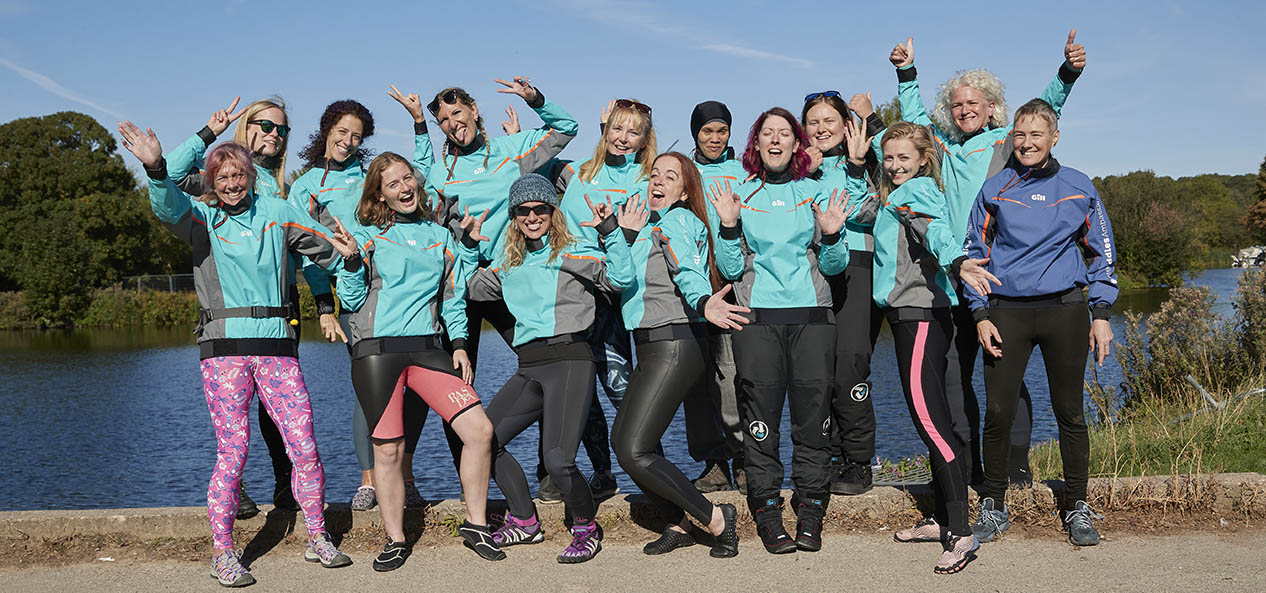#ShePaddles is an initiative from British Canoeing which aims to increase the number of women and girls involved in the paddling community across participation, coaching and leadership positions.
Why was #ShePaddles created?
Our female membership at the time we launched this initiative was only 28% and this highlighted the need for a concerted effort from us to improve in this area.
In February 2018 we hosted a Women in Paddlesport engagement day which gave women the opportunity to share their experiences, highlight barriers and propose solutions to the question of how to get more women and girls involved in paddlesports.
This information, coupled with research from the outdoor industry and various other sources, highlighted the need for more female role models to be involved in telling their lived experiences through a variety of channels in order to inspire other women and girls into giving activity or in this case paddlesports a go.

We therefore created two separate parts to the programme:
#ShePaddles Ambassadors
Each year we choose a number of inspirational women who share their love of paddlesport via social media and on the ground.
They are chosen to represent paddlesport at a range of different levels and in a variety of disciplines but one thing they all have in common is their passion for getting outdoors and sharing their love of the sport with others and help inspire other women and girls to participate in paddlesport.
#ShePaddles Champion Club programme
We also work with clubs across England to improve the opportunities for women and girls in paddlesport by supporting clubs to attract, retain and increase participation.
Additionally, this programme focuses on supporting more women to become coaches and leaders, as this plays an important part in changing the landscape within clubs and reducing the current gender split in paddling.
Our current female membership is now at 38.6%, which in real terms represents a threefold increase across the four years of our #ShePaddles initiatives.
But even more significant is that over the last three years 42% of our new members are female!
How important is the self-affirming aspect of #ShePaddles?
We know this plays a huge factor- information from a recent survey indicated that some of the top barriers women face around paddling are a fear of rejection or exclusion, and feeling uncomfortable or struggling to find a suitable kit which fits a range of body sizes and shapes (and isn't based on men’s sizing or fits), so we understand the importance of ensuring women feel welcome and confident to come to our sessions as they are.
We are now working closely with Gill Marine, our Go Paddling partner, to address the concerns raised by women around their kit; we have helped link up a number of our female athletes, recreational paddlers, current and previous #ShePaddles Ambassadors with the Product development team at Gill Marine, who have in turn been working with them to design and test kit to meet their needs, so we hope to see things change as we move forward into the future!
Our project also aims to make paddlesport a self-affirming experience for women by supporting clubs in multiple additional ways including improving the imagery representation and visibility of women on their website/social media platforms, increasing the availability of women only (or women-led) sessions, and improving the understanding and awareness of the need for suitable amenities for women and girls, such as toilets.

As an example regarding this last point, we have worked with clubs to review their website, social media channels and promotional resources to ensure that information about amenities is easily accessible to women and girls that are wishing to attend a session.
We appreciate that in the sport of paddling, some clubs do not own their own building/facility and therefore we have worked with them to find creative and affordable solutions to improve the provision, for example, we have advised clubs to purchase some pop ups tents that provide individuals with privacy when getting changed.
We have advised clubs to build connections and relationships with other local communities, such as uniform groups to allow access to facilities to toilets/changing rooms at specific times.
What challenges have you faced when launching this initiative, and how did you overcome them?
One initial challenge was to persuade club volunteers/committee that there was and still is a need to change behaviours and club practices to be more inclusive.
We overcame this initial resistance by focusing our resources on developing our members' knowledge and understanding of the barriers and motivators of women’s engagement.
We have set up individual meetings with Clubs/ambassadors to provide individuals support, we have organised a series of highly interactive webinar series on topics including:
- Understanding your audience
- How to write an effective Women and Girls Development Plan
- Delivering engaging sessions for women and girls.
What would you say to other people thinking of starting their own group or changing something in their local areas?
Our top tip would be to start with identifying the changes you would like to make at the participation level, be that having more female only sessions, or assisting your clubs to be more inclusive spaces.
This helps to ensure that when you start to promote your activity to the broader women and girls community that you are able to signpost them into an experience that is uplifting, welcoming and inspires them to come back again.
